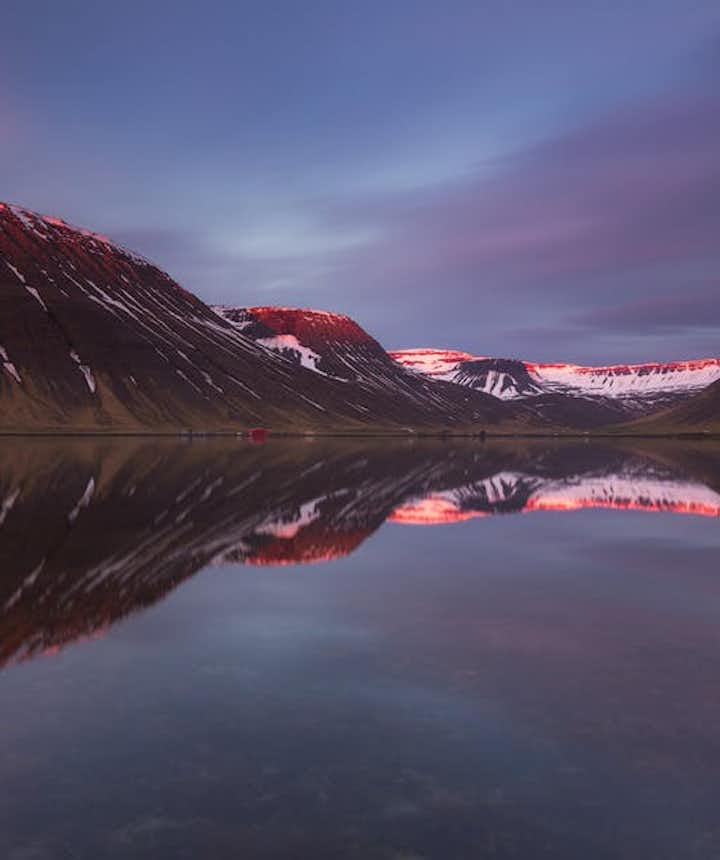

Surfing in Iceland

Where to go surfing in Iceland?
Should one be asked to name the very best surfing destinations on the planet, places like Southern California, Hawaii, and Australia would probably be the first to come to mind. But for surfing veterans, Ólafur Pálsson and Atli Guðbrandsson, the Arctic waters around Iceland have provided an entirely unique experience of wonder and adventure.
Top Adventure Tours in Iceland
Best ice cave tour in vatnajokull glacier starting from jokulsarlon glacier lagoon, inside the volcano thrihnukagigur tour with transfer from reykjavik, small group tour of snaefellsnes national park with transfer from reykjavik.
"Cold, beautiful and unpredictable" is how Atli, describes Iceland as a surfing destination. He has traversed the world in search of the perfect wave and is a diligent member of Iceland's slowly growing community of surfers who have mastered the waters of the southwest coast.
"Surfing has started to get more popular with Icelanders," says Atli. "Many people are trying it out and like the idea of surfing here but some can‘t be bothered because of the cold, the 50-minute drive and the effort it takes to learn how to read into the forecasts."
- See also: South Iceland Surf School | Learn the Basics of Arctic Surfing
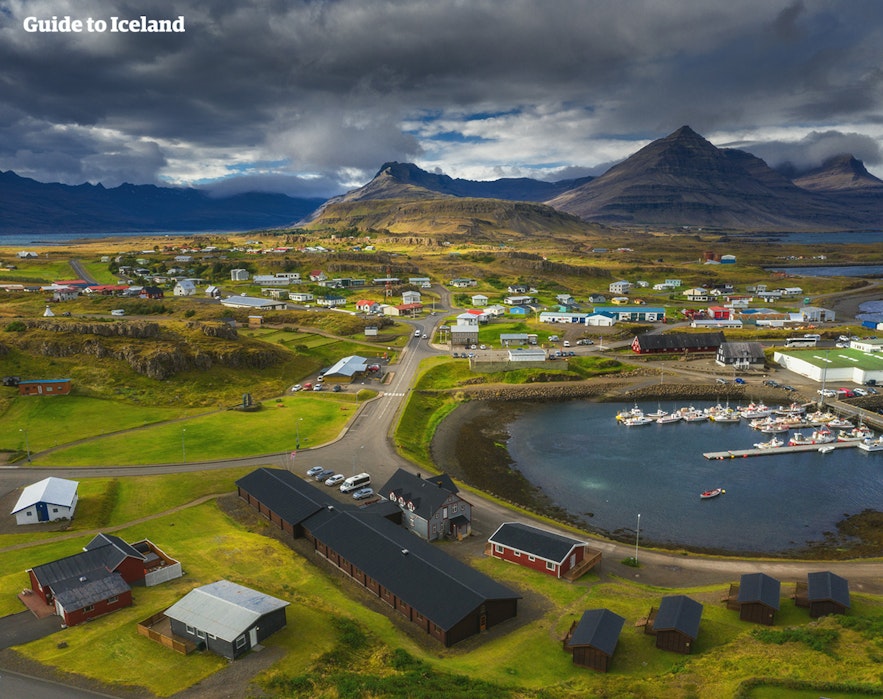
Surfing in Iceland demands hard work and a thorough understanding of the arctic sea: you really need to do your homework. But the challenge itself is precisely what has lured the most dedicated of Icelandic surfers into the ocean. They welcome the test that comes in the form of weather, logistics, and navigating your way through the frosty and often hostile landscapes.
In these harsh conditions, they have caught glimpses of beauty that has made unmatched worth of all of their efforts. "Most traveling surfers who come here to seek solitude and perfect waves, usually find solitude and crap waves", says Ólafur. "The trick is to spot that golden window of perfection where everything lines up, making forecasting very difficult, especially for traveling surfers. If you want to score perfect waves, you need to spend time surfing the local breaks and study the different weather patterns."
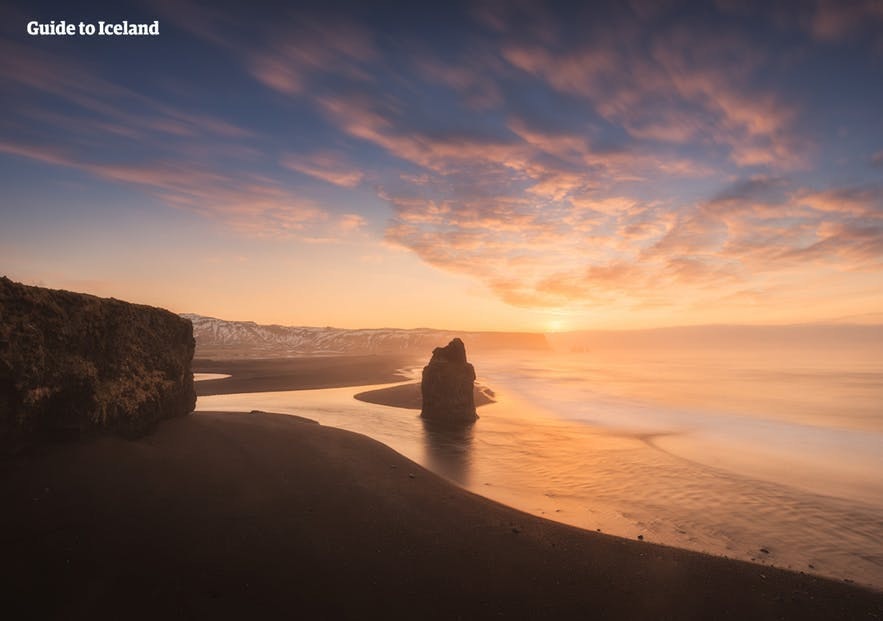
Surfing in Iceland not only presents challenges in the form of freezing water, snowstorms, and brutal winds but also beaches that are composed of extremely sharp rocks and surfers must always respect the unforgiving nature of the elements Iceland presents them with.
"We do have some beginner beach breaks that are good and without rocks", says Ólafur, "but all really good surf locations in Iceland are reef- or point breaks, often breaking very close to rocks or cliffs. The wetsuit provides some protection, but you need to be careful and in good shape."
"Most breaks here are reef breaks", Atli explains, "and many of them are fairly shallow, especially at low tide. Therefore you have to be very careful and know the spot and the wave. The number one rule is never to surf alone."
Ólafur describes the Icelandic surfing community as a very close-knit group that likes to meet both in and out of the water. "The vibe is always good between surfers in Iceland", he says. "We enjoy sharing waves. Icelandic surfers are like any other surfers, they want to protect Iceland as a surf destination from the masses. This means that traveling surfers need to be respectful in the water."
Icelandic surfers most commonly ride the waves around the Reykjanes peninsula where the fuming volcanic land spews milk-blue mud in a moonlike landscape composed of lava fields as black as pitch and mountains as red as blood; although you have barely ventured 60-minutes away from the warm cafés of central Reykjavik, it is as if you have traveled a million years back in time.
The peninsula's coastline is mostly made up of ancient lava flows where the majority of the waves break on extremely sharp volcanic reefs, with the exception of the black sand beach at Sandvik , which is home to excellent beginner's conditions where the waves can sometimes match the extremity of the reef breaks.
The very best time to surf in Iceland is between October and March when heavy storms hit the island from all directions. During this time the ocean drops to freezing temperatures and 5-6mm suits become absolutely essential.
Should you long for an arctic surfing adventure in Iceland you would be well advised to study the Icelandic weather forecast and tidal projection carefully, before renting a car and driving into the wilderness. Remember also that you can always connect with locals well in advance to seek guidance for the journey ahead.
Be well, be safe and enjoy.
- Check out these Tips for Backpacking in Iceland
- Find the large selection of Adventure Tours in Iceland here
- Read the Ultimate Guide to River Rafting here
Popular articles

Guide to Iceland | The Story of the Leading Travel Agency of Iceland

The Complete Guide to the Midnight Sun in Iceland

Top 20 Most Beautiful Waterfalls in Iceland

22 Photos of the Aurora in Iceland

Mountains in Iceland
Other interesting articles.

The Best 5-Star & Luxury Hotels in Iceland

Top 10 Car Rental Companies in Iceland
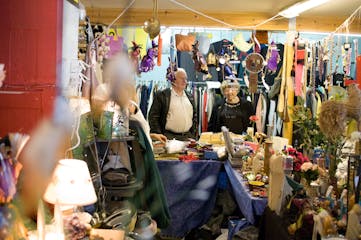
Top 9 Things to Do During Bad Weather in Iceland

Download Iceland’s biggest travel marketplace to your phone to manage your entire trip in one place
Scan this QR code with your phone camera and press the link that appears to add Iceland’s biggest travel marketplace into your pocket. Enter your phone number or email address to receive an SMS or email with the download link.
Top things to do in Iceland
Book your complete trip with the best companies only

Explore an Ice Cave

Visit a Live Volcano

Find the Northern Lights

Visit the Blue Lagoon

Go on a Road Trip

Do the Golden Circle

See the Glacier Lagoon

South Coast Tours
The Ultimate Guide to Surfing in Iceland
Surfing in Iceland is a real experience. Combine volcanic reefs and epic point breaks with almost ceaseless Atlantic swell and you get a picture of what’s on offer. Also remember that this is one of the great frontiers of European surfing. No one has discovered Iceland’s full potential.
An introduction to surfing in Iceland

Iceland – just a mention of the name is enough to get your breath misting in the air and the water freezing on those chest hairs. This island nation sits way up in the northern part of the North Atlantic, where icebergs command the bays and blizzards are possible well into the summer months. There’s a mega 4,000 miles of coastline on offer to wave hunters, all of which gets smashed by regular storm swells from the east, the west, the north, and the south.
Almost everyone agrees that the stand-out surf region in Iceland is the Reykjanes Peninsula. That’s also known as the Southern Peninsula because it juts out from the southwestern edge of the country. Entirely volcanic from tip to toe, the headland has bays of black sand that get refracting waves for beginners but also gnarly basalt reefs that are pros only. You can get to most in just 30 minutes from the capital of Reykjavík.
That’s really just a taster of what’s on offer when it comes to surfing in Iceland, though. As with a great many other adventure pursuits – hiking, skiing, wild camping – this is a true frontier. We’ve heard great things about empty bays of wild mountains and peeling rights over on the sides of Snæfellsjökull Volcano and loads more untrodden surf in eastern Iceland. We’ll leave that neatly under the radar.
We might use affiliate links in this post. Basically, you click em’ and we get a little something from your booking or purchase. They help us keep offering more and more in-depth surf guides to awesome places all around the globe. So, thanks for that!
This is just one part of our ultimate guide to surfing in Europe
Surfing in Iceland at a glance
- Exhilarating cold-water surfing
- Totally empty waves
- Friendly local surf community
- The water is cold
- Breaks are hard to access without your own car
- Not very beginner-friendly
What will I find in this guide to surfing in Iceland?
The top surf spots in iceland.
As we’ve said, Iceland is a true untrodden gem for surfers. There are potential spots all around the country, facing all compass directions. That implies a ridiculous consistency if you’re willing to work for it, not to mention surfs up beyond the Arctic Circle. By far the most famous surfing is around the Reykjanes Peninsula near the capital. It’s not only accessible stuff (especially compared to some locations here) but has options for beginners and experts alike. Let’s delve in…
One of the few north-facing beaches on the Reykjanes Peninsula, Gardur demands a lot of power in the sets for them to wrap through and into the fingers of reef that jut out under the lighthouse here. If they work, they’ll be big, frothing lefts that mellow out as they peel past the rocks and into the more sheltered bay. S is offshore here, so the spot offers a different option on warmer winds.
Sandvik is one of the best-known and most consistent surf spots in Iceland. The westerly orientation means that the beach – which is a jaw-dropping run of over 1,000 meters of black-diamond sand – gets almost continuous swell. That will oscillate between unruly storm swell in the winter months to long-period groundswells from a SW direction when the Gulf Stream allows. Naturally, the latter is better but there can be decently powerful summer windswells to get stuck into in between.
Sandvik is the beginner hub of Iceland for the summer months. Smaller sets in the 2-4 foot range come in here to offer lots of whitewash and mush for the learners. Plus, it’s one of the rare locations that breaks over sand and now jagged volcanic reef, so there’s that!
A machine of a right that churns out long, fast shoulders off a very shallow – like, toe-touching sorta’ shallow – reef, Grindavik breaks on the rocks to the west of the harbor of the town of the same name. It’s for experienced surfers only and reigns as one of the most challenging waves on the Reykjanes.
The beach that links the Reykjanes Peninsula to the coast of southern Iceland is a wide, upside-down C of a bay that gets hit by any N or NW swell. We’ve heard stories of people catching long rights off the jetty at the western edge of the beach. However, that’s not the money spot. The real jewel are the A-frame peaks that form up on the shallow cobblestone beds near the rivermouth in the east. They’ll work a charm when there’s a cold winter N wind blowing and look dreamy for surf photographers with the wild mountains rising like a phalanx of giants behind. Sometimes hollow and made easy because there’s a very clear paddle channel. Cold water in that comes straight down from the glaciers so be sure to pack the rubber.
Is the surf in Iceland difficult?
We’d rate Iceland as an upper-intermediate surf destination. There are two reasons for that. Firstly, the volcanic nature of the country means that many of the breaks here are over pretty shallow basalt reef. Anyone who’s ever surfed that will tell you that it’s not the most forgiving platform, with less give to it than coral and the potential to get pretty darn sharp. Secondly, Iceland’s peak season brings heavy swells and very cold water. The combo of overheads in the North Atlantic and 5-mil of rubber minimum can crank the challenge here to all new and dizzying heights.
If you’re considering coming as a beginner, our advice would be stick to summer and choose only the easier spots (AKA – limit yourself to the sandy beach break down in Sandvik).
When to surf in Iceland?

Overall, we’d say that the transition seasons of spring and fall offer the best surf conditions in Iceland. They tend to have the calmer winds and relatively consistent Atlantic gulf swells from the west, along with N winds from the Arctic that can be offshore along the whole south coast and the popular Reykjanes Peninsula.
Lots of guides will say that winter is the most consistent time. That’s technically true, but ask yourself if you fancy doing battle with 25-foot bombs that have gathered nothing but unadulterated ocean power since forming off the Canadian coast. There are weeks in winter when Iceland is a blown out mess and there’s nothing to be surfed. We actually even prefer the summer because it gets cleaner and brings better waves into the more exposed bays close to Reykjavík.

Surf & Discover Iceland!
You’re looking for an adventure of a lifetime, a unique und unforgettable surf trip filled with thrills and action? Then join us on one of our extraordinary surf adventures to the magical and icy world of Iceland! With us, you get to discover new surf spots every day, your once-in-a-lifetime chance to surf unridden and unnamed waves and, of course, to experience the stunning natural beauty of the Northern Lights. For our Iceland trips, you don’t need to be a hardened surf traveller or ripper, however, an intermediate level of surf ability as well as a natural taste for snowy adventures is required.
Our Packages
Surf day tour.
per person/day
- Surf Guiding, Lessons & Equipment
- Transfer to all locations
- Nature Expeditions along the way
- Meals during the day
- 1 day adventure
South & West Tour
per person/2 days
- 2 days adventure
- 1 night in shared accommodation
Arctic Adventure Tour
per person/5 days
- 5 days adventure
- 4 nights in shared accommodation
About Iceland

Welcome to Star Surf’s Partner Camp ― Iceland
In Iceland, the Nordic island nation between the North Atlantic and the Arctic Ocean, we offer a variety of surf tours, ranging from one-day surf trips across the beautiful Reykjanes peninsula to five-day surf adventures all across the Icelandic wildness.
Your Surf and Discover Camp Holidays
Welcome to Iceland, a country whose culture is deeply rooted in ancient heritage and where powerful volcanic forces have forged a rugged but beautiful land. Come along to explore incredible hotspots of thermal pools and steaming vents that dot the surface, to discover rainbow-lit skies above cascading waterfalls or snow-kept mountains and to see the beautiful natural spectacle of the unparalleled Northern Lights! Iceland’s volcanic origin makes it a unique playground for outdoor lovers and adventurous surf travellers. Nowhere else in the world can you find colossal glaciers and majestic volcanoes, mystical lava fields and multi-coloured mountain landscapes and, of course, unridden and unnamed waves that guarantee a surf adventure of a lifetime!
What makes our surf trip exciting is the anticipation on our hunt for waves of discovering an incredible surf spot behind every turn or hill; What makes our surf trip unique is the rare opportunity of finding new locations and unsurfed coastlines; And what makes our surf trip unforgettable is your once-in-a-lifetime chance to surf unchartered waves, where the only local surfers are the friendly seals and the only other footprints in the sand, or snow, are yours and those of your fellow adventurers. Join Star Surf Camps and our partner guides for a true surfing adventure of a lifetime to the world’s last remaining frontier for surf travel. Welcome to Iceland, the fantastic island of fire and ice!
Where to Stay?
If you don’t know where to stay in Iceland, don’t worry, we’re happy and here to help! Whether you’re looking to stay in Reykjavik’s music or art districts or a place close to the bars with the most bustling nightlife or the best local eateries, we can advise you on where to find your perfect home away from home. Call us or simply send us an email!

Surf Day Tour – The One-Day Wonder
Join us for an unforgettable one-day surf trip around the beautiful Reykjanes peninsula! Our local guides will pick you up from any location in Reykjavik. Once everyone is on-board our 4x4s, we start our adventure on the hunt for the day’s best waves. With multiple surf spots and some of the best and most consistent waves in Iceland just outside the capital, our local guides will find the peninsula’s best waves for you and your surf ability level. We usually find a suitable surf spot within 45min, and on our scenic drive, you get to see the geothermal wonders of the Reykjanes peninsula. The histrionic, rugged landscapes feature stunning volcanic craters, deep caves, large lava fields and a variety of thermal waters and hot springs, making the peninsula a destination in its own right.
Our day trips last for six to eight hours and include, besides expert local knowledge and guidance, all surf gear and transportation as well as a packed lunch and other delicious, local treats and treasures. Please note that due to the limited availability of surfboards in Iceland, we still recommend you bring your own surfboard. In addition to this, please note as well that this surf trip requires an intermediate level of surfing ability as the minimum ability level.

South & West Tour – The Two-Day Adventure
Join us on an incredible surf trip through the South and West of Iceland! Our two-day surf trip takes us from the Reykjanes peninsula along the rough but beautiful coastline of Iceland’s South-west though one of Iceland’s four national parks up to the stunning Snæfellsnes peninsula. Come along to explore the island’s rugged landscapes with stunning volcanic craters, deep caves, large lava fields and a variety of thermal waters and hot springs, to see the famous Snæfellsjökull volcano, the setting of Jules Verne’s Journey to the Center of the Earth, and, of course, to experience the surf of a lifetime! On our surf adventure, we’re always on the hunt for the day’s best waves. With multiple surf spots in Iceland’s South-west and some of the best and most consistent waves on both the Reykjanes and Snæfellsnes peninsula, our local guides and instructors will find the best waves for you and your surf ability level in no time. Prior to your surf trip with us, we will contact you to customize your surf adventure. Closer to the start date of your trip, we’ll be able to finalize your tour’s details depending on the weather forecast, locations, conditions, the swell, etc.
For our two-day adventure, you’ll be picked up around 9am on day one and dropped off around 8pm the next day. Besides a local tour and surf guide with expert knowledge and guidance, our surf trip also includes all transportation suitable to the trip, all surf gear, one night of accommodation, all meals (breakfast, lunch, dinner, snacks) as well as a whole lot of other treats and treasures along the way. Please note that due to the limited availability of surfboards in Iceland, we still recommend you bring your own surfboard. In addition to this, please note as well that this surf trip requires an intermediate level of surfing ability as the minimum ability level.

Arctic Adventure Tour – The Ultimate Expedition
On our ultimate expedition, expect a real arctic adventure among Europe’s last frontier for surf travel! Join us with an open mind, prepared to explore the island’s rugged landscapes with stunning volcanic craters, deep caves, large lava fields, a variety of thermal waters and hot springs and, of course, to experience your surf of a lifetime! On our surf trip adventure, we’re always on the hunt for the day’s greatest waves. And with the help of our local guides and instructors, we’ll certainly find the best waves for you and your surf ability level every day!
With multiple unknown surf spots and undiscovered waves all around Iceland, you never know what to expect after a turn or hill, where to find new locations with yet unsurfed coastlines or when to get your once-in-a-lifetime chance to actually surf an unchartered wave! Prior to your surf trip with us, we will contact you to customize your ultimate surf exhibition. Closer to the start date of your trip, we’ll be able to finalize all of your tour’s details depending on the weather forecast, locations, conditions, the swell, etc.
Your ultimate Iceland adventure includes, besides a five-day local tour and surf guide with expert knowledge and guidance, all transportation suitable to the trip, all surf gear, four nights of accommodation, all meals (breakfast, lunch, dinner, snacks), a trip to geothermal pools as well as a whole lot of other treats and treasures along the way. Please note that due to the limited availability of surfboards in Iceland, we still recommend you bring your own surfboard. In addition to this, please note as well that this surf trip requires an intermediate level of surfing ability as the minimum ability level.
The Blue Lagoon
Located on Iceland’s south-west coast among the lava fields of Grindavik, you’ll find the extraordinary Blue Lagoon. Just 45mins outside of Reykjavik, this gigantic hot tub is filled with over five million litres of well-tempered 37 to 39°C geothermal seawater and offers a most welcome contrast to the island’s chilly weather. Next to the lagoon, you’ll also find a sauna, a steam bath carved out of a lava cave, a massaging waterfall as well as a bar with cold drinks to take with you into the lagoon. For more information on how to get there, etc., please call us or simply send an email to one of our staff.
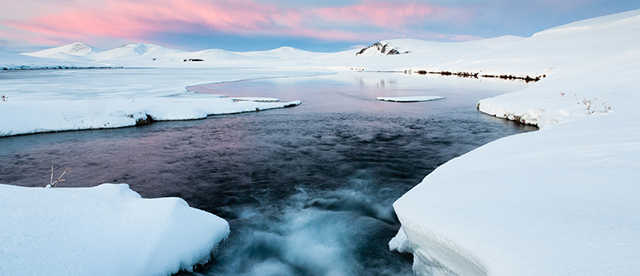
The Golden Circle Tour
The Golden Circle Tour is popular among locals and tourists alike and takes you on a stunning 300km-long loop around Iceland’s South. Starting in Reykjavík, on your way into central Iceland, you’ll drive through the breath-taking landscapes of Þingvellir National Park, see the golden waterfall of Gullfoss and experience the geothermally active valley of Haukadalur with the world-famous geysers of Geysir and Strokkur. A tour not to be missed! For more information, please call us or simply send an email to one of our staff.
If you are joining one of our longer and more adventurous surf trips to Iceland you will be greeted at the airport by our brilliant local surf guides, Arctic surfers Ingo and his crew. Simply let us know your flight times and we will do the rest.
Should you want to join us for just a few days surfing the surf team will pick you up from your chosen accommodation and return you to your doorstep at the end of your expedition, we highly recommend basing yourself in the bustling capital for its transport connections, proximity to waves and brilliant music scene.
You can fly to Iceland with a number of low cost airlines, our favourite is the Icelandic Wow Air. Be sure to get a window seat for stunning mountain and coastal views as you fly into this wonderful (and cold) surfing paradise.

Iceland Adventure Gallery

Any more questions?
Contact our Team

Surfing in Iceland: Unveiling the Arctic Waves Adventure

Iceland might not be the first place that springs to mind when you think of surfing, but the nation’s rugged coastlines and unique marine environments offer a surprising and adventurous surfing experience. The cold waters of the North Atlantic are brimming with opportunities for surfers seeking a different kind of thrill. Geothermal activity, dramatic landscapes, and the midnight sun provide a backdrop that’s as spectacular as it is surreal, making surfing in Iceland an experience that’s about more than just catching waves.
Surprisingly, the surfing conditions in Iceland can rival those of traditional surfing destinations. The country boasts a variety of beach breaks, reef breaks, and point breaks, catering to different skill levels and preferences. Complemented by the long daylight hours in summer, surfers can enjoy extended sessions in some truly unique conditions. Meanwhile, the colder months offer the allure of the Northern Lights, adding a whole new dimension to the idea of surfing by night. However, when planning to surf in Iceland, one must be prepared for the colder temperatures, with the appropriate gear and a willingness to embrace the chill of the Icelandic waters.
Key Takeaways
- Surfing in Iceland presents the unique appeal of Arctic waters complemented by stunning natural surroundings.
- The country offers diverse surf spots suitable for a range of surfing abilities and experiences.
- Adequate preparation is essential for the cold-water conditions characteristic of surfing in this dramatic North Atlantic landscape.

Surfing Conditions in Iceland
Iceland presents a unique opportunity for adventurous surfers seeking to ride waves in an Arctic environment. The country’s raw beauty and challenging conditions make for an unforgettable experience.
Understanding Iceland’s Arctic Waters
My surf trip planning always accounts for the cold water temperatures of Iceland’s beaches, which demand the use of quality wetsuits capable of withstanding the chill. The water temperatures hover around 2-6°C (36-43°F), so I make sure to gear up with 5-7mm wetsuits, hoods, gloves, and boots. The ocean’s might is on full display, with powerful swells propelled by the North Atlantic currents. These waters are not for the faint-hearted; knowledge of cold water surfing and respect for the unpredictable nature of the sea are crucial for safety. When checking the surf conditions , I look at the swell, wind, and tide data, which can vary widely, turning spots from placid to perilous rapidly.
Best Times for Surfing in Iceland
Iceland surf season peaks from September to April, with longer daylight hours offering more time on the water. The allure of surfing under the midnight sun is strongest during June and July when the sun barely sets, and I can find perfect waves even late into the night. However, those who brave the cold of Iceland winter surfing may be rewarded with the surreal experience of riding arctic waves under the Northern Lights , a sight so magical it defies description. I always keep an eye on forecasts for optimal conditions, as winter swells can be the most consistent but also the most challenging due to icy weather.
Top Surfing Spots in Iceland
Iceland offers an array of unique surf destinations for enthusiasts looking to ride the waves amidst stunning landscapes and cold waters. Surf tours in Iceland provide the adventure of a lifetime against the backdrop of the country’s dramatic natural beauty.
List of Top Surfing Spots in Iceland
- Reykjanes Peninsula : Here I find powerful waves and a variety of breaks that suit different levels of surfers. It’s easily accessible from Reykjavik and offers both beach and reef breaks.
- Vik : As Iceland’s southernmost village, Vik is known for its black sand beaches and consistent surf conditions. The point break here is particularly noteworthy for its reliability.
- Grindavik : This location on the Reykjanes peninsula provides less crowded options with a mixture of reef and beach breaks. The waves here are challenging and better suited for experienced surfers.
- Thorli : On the South Coast, Thorli presents more sheltered conditions that can be ideal when other spots are blown out. The break is predominantly a beach break with occasional reef sections.
- Hafnarfjordur : Near Reykjavik, this spot can offer a quick surf adventure without traveling too far. The waves here are fun for a more relaxed session.
- Ólafsfjörður : Heading to the north of Iceland, Ólafsfjörður is for surfers who are serious about their surf adventure. The waves here can be icy, but the stunning fjord makes a breathtaking surfing locale.
Each of these spots offers a distinct surfing experience, surrounded by the unparalleled beauty of Iceland’s landscapes. Remember to prepare with suitable gear, as the waters are cold year-round.

Preparing for Surfing in Iceland
I understand the unique challenges of surfing in Iceland, from the cold waters to the rugged landscape. To tackle the North Atlantic waves, one must be well-prepared with proper gear and be mindful of safety.
Gear and Equipment for Cold Water Surfing
Cold water surfing in Iceland necessitates a thick wetsuit , typically 5-6mm, with a built-in hood, boots, and gloves to maintain body heat. It’s also wise to opt for a surfboard suited for Iceland’s waves. If I lack equipment, various surfboard rental options are available in coastal towns. For beginners and enthusiasts venturing into extreme surfing , a soft-top board might offer additional stability and safety.
- Wetsuit : 5-6mm thickness, with hood, gloves, and boots
- Surfboard : Choose according to skill level; rentals available
Safety Tips and Considerations
In Iceland’s harsh conditions, where survival surfing can be a reality, safety comes first. I always check weather forecasts and consult local surf reports before heading out. Familiarity with exit points and rip currents is crucial to avoid getting caught in dangerous situations. It’s also a good practice to surf with a buddy and to inform someone ashore of my plans.
- Weather and Surf Conditions : Check before venturing out.
- Local Knowledge : Be aware of exit points and potential hazards.
- Buddy System : Never surf alone; inform someone on land about my surfing session.

The Surfing Culture in Iceland
Iceland, a nation known for its dramatic landscapes and unique natural beauty, has a burgeoning surfing scene that is gaining attention worldwide. The cold waters of the North Atlantic Ocean serve as a backdrop to a dedicated community of surfers who embrace both the challenging conditions and the exceptional waves.
The Local Surf Community
The surf community in Iceland is welcoming and tightly-knit, characterized by a passion for the sport that transcends the frigid temperatures. I find that local surfers share an intrinsic bond, forged by the shared experience of surfing Iceland’s rugged coastlines. Surf camps provide an integral meeting point for novices and veterans alike, serving not just as learning hubs but also as cultural gathering spots where I can absorb the core values of Icelandic surfing culture. The camps, like Arctic Surfers and others, are instrumental in fostering this connection, delivering not just surf instruction but also a sense of camaraderie.
Surfing and Environmental Awareness
Icelandic surfers have a profound respect for their environment, and sustainable surfing is not just a practice but a principle that is thoroughly ingrained in the local surf ethos. The dialogue around sustainable surfing in Iceland is prominent, focusing on the preservation of the country’s pristine coastal ecosystems. Initiatives to use eco-friendly surf wax and reduce the ecological footprint of surf events echo throughout the community. Moreover, surf photography in Iceland plays a vital role in this awareness, capturing the symbiosis between surfer and environment. Immortalizing the raw beauty of Iceland’s waves, these photographs are a powerful testament to the necessity of conserving the very landscapes that make the sport here so memorable.
Unique Experiences While Surfing in Iceland
In Iceland, my surfing adventures transcend typical experiences due to the nation’s exceptional environment. Here, I bask in the marvel of surfing under the perpetual light of the midnight sun and interlace my time catching waves with unparalleled excursions into Iceland’s dramatic natural wonders.
Surfing Under the Midnight Sun
I find surfing in Iceland during summer months uniquely remarkable due to the phenomenon of the midnight sun. Paddling out into the North Atlantic as the sun hovers on the horizon, even come midnight, is a surreal experience. The soft golden light casts a magical hue over the landscape, allowing me to enjoy extended surfing sessions without the concern of diminishing daylight.
Combining Surfing with Iceland’s Natural Wonders
Surfing in Iceland is more than riding waves; it’s an opportunity to engage closely with Iceland’s extraordinary terrain. My days are often complemented by soaking in geothermal hot springs, their soothing warmth a perfect counterbalance to the chilly ocean. It’s not uncommon for me to alternate between riding the cold surf and relaxing in the steamy embrace of a hot spring nearby, embracing the stark contrasts that define Iceland.
Equally thrilling is coupling a day of surfing with a glacier tour. Surfing with views of imposing glaciers is awe-inspiring and serves as a powerful reminder of Iceland’s unique ecological diversity. I see this as a chance to appreciate the raw and rugged beauty of glaciers, only a stone’s throw away from the serenity of the ocean.

In my exploration of the Icelandic surfing scene , I have discovered a robust, albeit niche, surfing community that thrives amid the country’s unique conditions. Cold-water surfing in Iceland is not just about the sport; it’s an experience deeply intertwined with the captivating Icelandic landscapes and the warmth of local surf culture.
Iceland offers a range of surfing destinations from the volcanic beaches in the south to the rugged peninsulas in the west. Despite the chilly waters , the pursuit of surfing in Iceland is made worthwhile by the exceptional waves and the stunning, unspoiled scenery that frames each session.
It’s important for surfers to be well-prepared for the Icelandic environment. Essential gear includes a quality wetsuit, booties, gloves, and a hood to insulate against the cold. Knowledge of the local conditions is vital, and I always recommend consulting with local surfers or guides who can offer invaluable insights on the best spots and safest practices.
Finally, I acknowledge that surfing in Iceland is not for everyone. It demands a level of resilience and passion for the sport, given the unique challenges posed by the climate and geography. Nevertheless, those who dare are rewarded with an unmatched surfing experience that goes far beyond the waves. My time surfing in Iceland has been nothing short of extraordinary, leaving me with memories of thrilling rides and awe-inspiring natural beauty.
Frequently Asked Questions
In my exploration of surfing in Iceland, I’ve come across a number of common inquiries. These are essential for anyone looking to catch waves in this unique and rugged environment.
What equipment is necessary for surfing in the cold waters of Iceland?
To comfortably surf in Iceland’s frigid waters, you’ll need a quality wetsuit—at least 5mm thick—with boots, gloves, and a hood. This gear is crucial for insulation against the cold.
When is the best season to go surfing in Iceland?
The best time to surf in Iceland is during the shoulder seasons, from March to May and from September to November. During these months, you’ll find consistent swells and slightly milder weather conditions.
Where are the top spots to surf near Reykjavik?
Near Reykjavik, the top spots for surfing include Grindavik on the Reykjanes Peninsula and Thorli Beach. These spots offer a range of waves suitable for different skill levels.
Are there surf camps or schools available for beginners in Iceland?
Yes, there are surf camps and schools that cater to beginners in Iceland. They provide lessons and guidance on tackling the unique Icelandic waves and conditions.
How do the surf conditions in Iceland compare to other popular surfing destinations?
Iceland’s surf conditions are far more challenging and variable than in more established surfing destinations. The cold water, changing weather, and remote locations add to the adventure.
Can you find surf rentals nearby Icelandic surfing beaches?
Surf rentals are available near most established surfing beaches in Iceland. Here you can rent necessary equipment like boards, wetsuits, and other gear.
Surfing in Iceland: Sandvik, Thorli, Grotta & More [Guide]
A place where glassy waves break over volcanic reefs with unparalleled views of huge mountains in the distance.
No, we’re not talking about the North Shore of O‘ahu or the coast of Guanacaste, Costa Rica – think colder, much colder.
Replace sand with snow, rocks with glaciers, and dolphins with orca whales.
Home of the Northern Lights, Blue Lagoon, and the oldest geyser in the world, Iceland is a Nordic Island nation whose incredible surf flies way under the radar.
Surfing in Iceland

The Pioneers
No one can really know for sure how long these waves were kept secret, but what we can pinpoint is when they started to become popular — and it wasn’t very long ago.
Some of the first individuals ever recorded surfing in Iceland were actually Americans stationed at NATO’s Keflavik air base in the early 90’s.
Erlendur “Elli” Thor Magnusson, a distinguished photographer who has helped put the island on the world surf map, can recall hearing about the foreigners in his late teens.
A Reykjavik local, Magnusson’s first time on a board was when he was nearly 20 years old, almost a decade after he got into photography.

His work, in hand with colleague Chris Burkard’s, has transformed the sport of surfing in the last two decades, as the duo has been greatly responsible for bringing attention to the waves this destination has to offer.
Combined, Magnusson and Burkard have had images published in Surfer Magazine , The New Yorker , Patagonia , Surfline , and National Geographic .
Ingó Olsen is another important name to note, as he’s been referred to as the ‘father figure’ of Icelandic surfing.
A native like Magnusson, Olsen is an early pioneer in discovering breaks all over the island.
Today, he runs Arctic Surfers, a group of outdoorsmen who spend their time exploring the nation to organize “adventure vacations”.
Waves in Iceland
Iceland’s coastline stretches over 4,000 miles long, allowing for a variety of forecasts around the country.
From smooth point breaks to powerful reef slabs, on a good day Iceland has a spot for everyone.
There are often flat periods in the summertime, but once it’s winter in Iceland, Atlantic swells come from every direction.
Something to be mindful of here though is the unforgiving bottom. The island is covered in around 130 volcanoes, so the ocean floor is made up of basalt reef which, if you can believe it, has significantly less give than coral. Often sharp and shallow, Iceland is not the best place for anyone less than expert to experiment with waves bigger than they’re used to.
Gear Needed to Surf in Iceland
To most, surfing in below-freezing temperatures may seem rather insane, and while there’s probably some level of truth to this opinion, the right gear can make all the difference in the world.

Both visitors and locals should expect to suit up in the whole nine — or in this case, the whole four.
Because of the climate in Iceland, it’d be extremely dangerous to paddle out in anything less than a neoprene wetsuit , booties , hood , and gloves .
Thick, quality equipment can be pricey, but when you’re about to surf oceans cold enough to keep glaciers afloat, you’ll want gear you know you can trust.
The Best Surf Spots in Iceland
There are surf spots on every side of the island, but one’s best bet at scoring good waves will be the Reykjanes Peninsula which is located towards the southwest corner of Iceland.
An hour from Reykjavik, Sandvik is an exposed, black-sand beach break that typically offers more groundswells than windswells, with long rides into shore.
What’s neat about this beach in particular is that it has year-round potential for both lefts and rights.
Just be careful of rip currents – they’re not uncommon here.
Resting on the southernmost part of the Reykjanes Peninsula is Thorli, one of the most consistently surfed waves in Iceland.
The beach is renowned for its big swells that allow for lengthy, top-to-bottom surfing – the deep paddling channel also means no duck diving!
A true cultural meeting place in Iceland, this wave is currently in grave danger due to the potential expansion of Þorlákshöfn Harbor.
Hafnir Harbor is right in the middle of the western coast of the peninsula and is at its peak during the winter, specifically in the month of February.
Powerful waves can get up to the size of buildings at Hafnir, but in ‘warmer’ weather the surf is safe for beginners and small groms.

Ollie’s Shipwreck
Off the coast of Hópsnes Lighthouse on its own mini peninsula within Reykjanes is Ollie’s Shipwreck.
Directly off the point are short rights, but the main break is a long left off to the side.
Ollie’s forms over volcanic reef so it’s best to paddle out during high tide.
Also directly in front of a lighthouse, Grotta is located on the Seltjarnarnes Peninsula, less than 10 minutes from Reykjavik.
The break works best when there are offshore winds, and its swell angle is coming from the west.
Clean waves are less common than blow outs, but when the conditions are optimal it’s a must if you’re in the area.
The Bottom Line: Surfing Iceland

You definitely have to have a passion for surfing to do so in Iceland with the freezing weather and sharp bottom breaks, but if you’re up for it and well-equipped, there’s no question it will be an unforgettable experience – especially if you go between December and March when you may get to paddle out beneath the Northern Lights.
- Surf Guides
Recent Posts
The Ultimate Kahuku Oahu Surf Guide
The Ultimate Cuba Surf Guide
Where to Surf in Perth, Australia (Surf Guide)
Comentários

Travelling Without a Passport

Your Guide to Surfing in Iceland

Surfing and Iceland are two words that aren’t typically said together. When you think of surfing, you imagine beautiful beaches on the coastlines of Hawaii, Australia, or South Africa. You think of bright blue water, warm golden sand, and bathing suits with flip flops. Surfing in Iceland, an extremely Northern country with cold, rough waters, is a lot different.
Whether you’ve never thought of it before or you just watched the Netflix documentary Under An Arctic Sky and feel inspired , surfing in Iceland is growing in popularity. But knowing how to get started can be a bit trickier, especially considering the sport is so new to the country.
When it comes to surfing in the ocean surrounding Iceland, here’s what you need to know.
Travel to: Iceland
Icelanders and visitors alike surf in Iceland all year round. Regardless of the season, passionate surfers find something to love about every month. It is important to note, however, that not all of the seasons are the same when it comes to surf.
Spring (March to April)
Spring brings consistent swells with days that are beginning to lengthen after winter. The air is a bit warmer and surfers are often able to find some decent days on the water. That being said, there is likely to be a lot of downtime waiting for the right waves, as the waters are starting to calm after winter.

Summer (June to August)
Summer is much warmer in Iceland, with the midnight sun bringing endless hours of sunlight. In fact, in July, the sun does not set at all. Unfortunately, the surf isn’t as consistent as the colder months, meaning while the days are long and beautiful, the ocean won’t offer nearly as many waves.
Autumn (September to November)
Autumn means winter is coming, and the temperatures and water are beginning to prepare for the elements. The days are getting shorter and the temperatures are dropping, which means the surf is slowly starting to reach it’s fullest potential.
See Also: The Best Surf Trips for Intermediate Surfers
Winter (December to February)
Winter is the harshest season in Iceland, but the best in terms of surfing. The weather is cold and unpredictable, the days are short and dark, and road conditions can be treacherous. That aside, winter offers the best swells of the year, amazing light, and the potential of seeing the Northen Lights. If you can brace the cold, both in the air and in the water, this is your prime surfing season.

Water temperatures
The warmest water is near the end of summer and the start of the fall season, with water temperatures ranging anywhere from 10-14°C (50-57°F). Winter, on the other hand, brings the coldest temperatures with a range of 3-5°C (37-41°F). It’s important to note that the temperatures are always colder in the North than in the South, so depending on where you surf, the temperatures will continue to vary. The coldest place you can surf is up North in the dead of winter, while the warmest would be in the South at the end of Summer.
What to bring
Surfing in Iceland, regardless of when you visit, is no walk in the park. You won’t be packing a bathing suit and sandals like you would in most locations: you’ll be packing a performance wetsuit and boots. Here are the essentials you shouldn’t forget to bring:
- Wetsuit with hood
- Neoprene shoes, gloves, hood
- Swimsuit for under wetsuit
- Warm clothes (winter boots, hats, mittens, etc)
- Camera or go-pro
- Hand warmers
- Warm blankets
To make things easier, there are a number of tour operators that make the process of packing much easier with gear rentals. Bringing a surfboard onto an airplane isn’t always easy, so explore your different local tour options and ask about renting equipment.

Where to Go
For beginners.
Finding a beginner surf spot can be difficult in Iceland, as many of the country’s surf is located at point breaks. However, some of Iceland’s black-sand beaches on the south coast, such as Porlákshöfn or Sandvík are great spots to try out if you’re still mastering the basics of surfing.
For intermediate surfers
Surf in Iceland tends to be better suited for beginners or experts, so it can be difficult to find that middle ground for intermediate surfers. But fear not! The waves in the Reykjanes Peninsula are some of the best and most consistent in Iceland.
For experts
Iceland is a haven for expert level surfers! If you’re looking for a challenge, head to Grindavik, a reef break spot where waves swell more than many other places on the island. In the Reykjanes Peninsula, the popular Thorli offers consistent swells for advanced surfers.

What to expect
Surfing in Iceland is one of the most unpredictable, cold, and beautiful things you’ll ever experience. It’s almost impossible to say what each day will bring and you’ll never have the same surf twice. That makes knowing what to expect a bit difficult, but generally speaking, here’s what you’ll likely experience:
See Also: Iceland Off-Season: Your Complete Guide
The weather can be harsh
Iceland is known for its harsh winters and unforgiving weather. Even if you visit in the summer, the weather can change in an instant from bright and sunny to high winds and rain. Being prepared for the weather and travelling accordingly is vital for a successful surf trip. Pack the right things, travel with an open mind and keep a positive attitude even when the weather tries to challenge you.
The beaches aren’t typical
If you’re going to surf in Iceland, you must be aware that most of the beaches are point breaks or reef breakes , meaning there’s little to no sand and the beach breaks directly onto rocks or cliffs. This makes surfing difficult, especially if you’re a beginner. That said, there are some great beginner beach breaks that will make learning a lot easier if you don’t have much surfing knowledge.

Plans will change
Understanding the weather and water is key for surfing in Iceland. It takes research, experience, and a connection with the water to know when the surf is going to be just right. That means on most surf trips, plans will change. Being adaptable to weather and knowing when to make a shift in plans will go a long way in ensuring you have a great trip with the right waves. Surfing with a tour group experienced with surf will make it easier to judge the weather and water.
See Also: The Perfect 7-Day Itinerary for Southern Iceland
How to prepare
Preparing for a surf trip in Iceland is necessary. It will definitely be an outstanding experience, but without proper preparation, surfing in Iceland can quickly become dangerous.
- Know how to swim. If you’re not a strong swimmer, surfing in Iceland will be both difficult and dangerous. In fact, many tour companies won’t allow those who aren’t strong swimmers to surf.
- Experiment with surfing before you go. Arriving in Iceland with no prior surfing experience will make your trip a lot more difficult. If you can, learn the basics of surfing before embarking on a trip to Iceland; that way you can really enjoy the waves once you get there.
- Research the seasons and the water. There are two major factors that will determine how your surf trip will play out: the water and the weather. Do your homework on the weather trends, water temperatures, previous successful surf months, and more.
- Reach out to the locals. There are tour operators that have years of experience surfing in Iceland and they will know how to answer your questions and concerns. Speaking with them directly will help make trip planning ten times easier.
While it’s certainly not the most conventional surf destination, surfing in Iceland is sure to bring new experiences and life-changing adventures to those brave enough to attempt it. With a bit of research and pre-planning, anyone can enjoy an amazing surf trip in Iceland!
Would you consider surfing in an Arctic country like Iceland? Why or why not?

Jesse Warner
Jesse is a blogger and content creator who loves travel, the outdoors, and her dog, Molly. When she isn't planning her next trip, she can be found watching Netflix documentaries, enjoying time by the water, or eating soft-serve ice cream. Follow her on Instagram , Facebook , or check out her blog .
Related Articles
- Food & Drink
Your Guide to Amsterdam’s Secret Bars and Speakeasies
One of the most popular cities in Europe, Amsterdam has no...
- Tips & Tricks
Best Destinations for People with Disabilities
The world and its wonders should be available to one and...
The Seven Most Scenic Train Rides in Europe
Forget planes, buses or automobiles: 2024 is the year of the...

Cinque Terre vs. Amalfi Coast
Get unlimited access to the world's best travel stories. subscribe now., privacy overview.
- North Iceland
- South Iceland
- East Iceland
- West Iceland
- Accommodation
- Icelandic Culture
- Weather in Iceland
Surfing in Iceland? Icelandic surf guide
While surfers have been wandering the globe in search of perfect waves for a solid 50 years now, until recently, in order for a place to be considered a surfing mecca it had to meet the idyllic tropical threshold: swaying palms, warm water, powder-white beaches. It’s no wonder places like Tahiti, Fiji, and Indonesia have well-beaten paths. But true adventurers are always on the frontier, which, in surfing circles, is getting pushed farther and farther away from the equator. Let’s ride the waves in this Surfing in Iceland post!

Popular Categories
Iceland is a destination that has blossomed in popularity in recent years. A decade ago, no one was talking about this tiny Nordic island in the North Atlantic. And now it seems to be at the top of every traveler’s bucket list. You can’t really blame them; the Land of Fire and Ice is one of the most spectacular, breathtaking places on Earth. We created this Iceland travel blog to help you discover what to see and do in Iceland.

Stay Tuned!
Only elves live under a rock! Do not miss any of our freshly baked posts!.

- Aug 26, 2022
The Coolest Guide to Surfing in Iceland
Surfers usually seem pretty cool and chill. In Iceland, they are cool in another sense and will definitely be chill after some time in the water. With the cold, hard winds, and very active waters, surfing in Iceland is an experience of a lifetime. Decide when to go, contact the locals for the best support regarding equipment and location, and catch some cool waves in not so chill waters!
When seeing a huge wave come crashing in on the shore, we often think, “Wouldn’t it be cool to surf that?”. Iceland has no shortage of large and powerful waves. Often, they can be an issue, but in certain areas and at certain times, some people brave the waters to ride them! In this article, we disclose all you need to know about surfing in Iceland and the coolest surfing spots you can find.

Surfing in Iceland
Can you surf in Iceland? Definitely! In fact, since it’s such a unique experience, we personally believe that it should be on the list of the best things to do in Iceland !
Toss the coconut drink aside and leave the blistering sand for a cup of warm cocoa and a cool, black beach. Despite being in the far north, surfing in Iceland is gaining ground in the international surfing community . Still, we won’t see a major surfing contest in Iceland anytime soon.
The volatile ocean at the coast of Iceland creates great waves to surf on, but historically, the waters have been too cold to surf in. With the development of modern dry suits, surfers can now get into the waters and stay in for a long time without getting hypothermia. That surely makes surfing in Iceland a breeze! Or maybe just warm enough to enjoy.
Cool Temperatures and Windy Weather
Even though there are many fun puns to make about Greenland being icy and Iceland being green, the temperatures in both water and air will very likely live up to the name of the country.
When you plunge in the Iceland waves, you can’t expect the same warm welcome as you would when you take a dip in the Icelandic hot springs. That’s why it’s important to know what you wear to surf in Iceland . An Iceland surf guide will be happy to help you with your choice of equipment, though, so don’t worry.
Even though Iceland is at the end of the warm Gulf Stream, the waters will never be warm. The warmest surfing in Iceland will be around 10 °C at the peak of summer and drop to around 4 °C in the winter . Fun fact: 4 °C is a normal temperature in the water around the colder areas around both the South and North Pole. This makes this more or less the coldest waters you will find that aren’t frozen over.
We love Iceland, but the weather is volatile, and it’s even more hectic on the coast. Inland, the weather is often milder. It will provide still December nights with northern lights and serene snowfall, as well as long and warm summer days with some midnight sun .
At the coast, the wind is a constant companion, and luckily for surfing in Iceland, that is exactly what we want! The wind often drives waves and gives the Iceland surf game an extra kick.

Cold vs. Cold – Choosing Which Season to Surf
In the summer, max temperature is around 20 °C on land. But it will normally be in the range of 10-15 °C. This makes hot cocoa and a thick blanket good things to pack, even in the summertime. In the winter you will have freezing temperatures, but with the right gear, and a warm hat made of Iceland wool , that shouldn’t bother you too much.
Choosing the time of the year to go surfing in Iceland is going to come down to what you like the most. The surf season Iceland has is all year round, but different seasons come with different perks and drawbacks.
In the Icelandic winter , the days will be short, and the weather will be icy and tough. The rough weather comes with the added benefit of higher and more frequent waves that you would want to take.
Icelanders are big on fishing , so you’ll often find them doing that whilst you’re out surfing. But fishing in the ocean isn’t that popular during the winter months. And if you were hoping to combine your love of surfing and fishing by jumping on the global trend of surf fishing, you, unfortunately, won’t find that activity on the island - yet.
In the summertime, the weather is fine, and so is the water. This means that the Iceland summer is both good and bad. The weather and water will be more pleasant to be in and around, making your day more enjoyable whilst surfing. The water will be calmer and produce fewer good waves, but since you have an incredibly long day, you have time to wait.
Both winter and summer are seasons with high pressure from visitors, and the prices often go up. To bring down the Iceland surf trip cost, you can always aim for the shoulder seasons that have a little bit of a mix between the rough waters and longer days. The travel cost will be lower, accommodation a bit cheaper, and you will likely have an easier time renting equipment.

Vibes and Waves – Where to Surf in Iceland
Since the waters around Iceland are cold, rough, and anything but forgiving, there are only so many places you can safely surf at. When it comes to the best places to surf in Iceland, we have compiled a list of our top 3 spots for beginners, intermediate, and experienced surfers .
Sandvik is the most popular spot to surf in Iceland and is where you will go as a beginner. This is in the Reykjanes peninsula and is a great place to start to get a feel for the waters.
Eyvik is in the northern part of Iceland and is great if you have some experience. It is in the northern part of Iceland
Gríndavik is where you will have to really take on the waves. It’s great for experienced surfers and is exactly where you want to end your Iceland surf trip.
Finding Surfing Equipment in Iceland
The water is cold, the air is cold, and the market for buying surf equipment is... practically non-existent. If you contact an Iceland surf camp or any similar organization, they will help you with the necessary equipment and point you to the best surf companies in Iceland.
But for a short visit, you don’t want to purchase any equipment for this or any other extreme sports in Iceland , so renting will be your best option. Bringing surfing equipment on a plane is also a hassle, so we recommend contacting your organizers before you leave to make plans for your surfing trip in Iceland.
What are the Surfing Alternatives?
Look, the heart is strong, but the flesh is weak and even though you may have many surfing dreams, your body might simply not agree with you. Some people can have the best intentions and an even better surf camp trainer only to realize that for some bizarre reason it’s like their body just doesn’t want to move with the board. That doesn’t mean that you’re not aching for some Iceland water adventure.

For these unlucky few, we highly recommend going scuba diving in Iceland or snorkeling in the Silfra Fissure . If you like water sports, you should absolutely not miss this unforgettable experience, and we're sure it will be one of the highlights of your trip.
Silfra is the part of Iceland where the Eurasian and North American tectonic plates push each other away and you can float around in the natural spring water flowing in between.
Just keep in mind, that whilst anyone can go the snorkeling route, you’ll need to have all the necessary certifications to go scuba diving .
Now you know where to go, when to go, and how to get the equipment to get the authentic surfing in Iceland experience. Your next move is to check out and rent a car to cruise the Iceland roads on your way to the coolest surfing experience of your life.
Recent Posts
The Story of Morsárfoss, Iceland's Spectacular Waterfall
The 8 Must-Visit Iceland Hot Springs
Landmannalaugar Unveiled: Your Ultimate Guide to Iceland's Hidden Gem

- Tour Packages
- Tours From Reykjavik
- Self Driving Activities
- Family Friendly
- Shore Excursions
Private Tours
Northern Lights Tours
- Volcano Tours
- Itinerary Planner
- Custom Itinerary
- Travel Guides
- Things To Do in Iceland
- Locations in Iceland
- Hot Spring Map
Surfing in Iceland – Arctic Surfing
The dazzling land of fire and ice, Iceland has a tremendous amount of beauty in its wake. Nature lovers, explorers, adventurers and so many others who visit Iceland find their peace in the country. But Iceland does not stop at that. A wonder of water, surfing is also a crucial part of the country. Blessed with ample water bodies such as hot streams, waterfalls, lakes among others; Iceland is serene heaven for those who are pursuing surfing professionally or want to try the sport for the first time in their lives. Many tourists do not even know that Iceland is among the best places for surfing in Europe. Surfing in the region is by far one of the best things you can do. Though there is less number of sunny beaches and warm water bodies, still Icelandic landscape makes surfing exotic. After all, who wouldn’t want to ride out wild Arctic waves surrounded by ice, volcanoes, and fields of lava? Also, if you want to avoid extremely populated beaches and stuffed seashores, arctic surfing in Iceland fits the bill perfectly. Freezing cold, adrenaline trigger, refreshing- this is how surfers describe their experience of surfing in Iceland.
A mesmerizing and perfect wave is often searched by surfers around the world. While most surfers find their perfect sea playground on beaches amidst heavy crowds, surfers in Iceland have managed to keep their amazing secret to themselves. As a new explorer, you can always find treasures in the palpable beauty of Iceland. Surfing is getting popular among foreigners as well as the Icelanders. Arctic Surfing in Iceland is quite difficult and demanding. So if you are looking to tick surfing off your bucket list, you need proper training, just like any other sport, and a thorough knowledge of Arctic weather, waves, and strategy. After all, the challenge is what pushes surfers into the water. While for trained professionals surfing can be fun in Iceland, it is usually not the same for beginners or amateurs. Surfers must have some experience before they indulge in cold water surfing in Iceland as the best waves sometimes break close to risky rocks and cliffs which can be seriously harming. Also, as a bit of strict advice, follow the rule of never surfing alone to minimize the risk of any mishappening.
- Surfing tours in Iceland
- Hiking in Iceland
- Top 10 summer activities in Iceland
- Camping in Iceland
- Discover hidden gems in Iceland.
- Self Driving in Iceland.
Best Season For Trying Your Hand At Surfing In Iceland
Surfing in Iceland poses constant challenges in the form of freezing water, accumulated lava, snowstorms, and windstorms. Some beaches are composed of sharp rocks. In this situation, you must always be acquainted with weather conditions and the best season to surf. Though experienced and enthusiastic Icelandic surfers enjoy surfing all year round, winter is probably a great season for arctic surfing in Iceland. Most surfers dive into the water between October and March when Iceland is hit by heavy storms from all directions. It is the season when it seems waves themselves are calling out to the surfers. Thrill and adventure double up for surfers during the winter season but at the same time, it also increases the risk for you, after all, there are still windstorms and snowstorms. Before starting your arctic adventure, always take your time and carefully study the weather forecast. If you crave an arctic surfing adventure in Iceland, a thorough study of tidal projection and weather conditions is highly recommended.
Joining the Locals
Another key aspect is getting in touch with locals or experienced surfers’ communities who have been practicing locally for a long time so that you have a total grip on all conditions required for surfing in Iceland. Connecting with locals is not just helpful for your surfing experience, but it generally provides you insights for your journey further in the exploration of the land. Seeking guidance from locals for accurate information reduces the probability of risks and harm. It builds your understanding too, so that when you go back home and someone needs guidance for surfing you can provide it. It takes a fair amount of time and training to get accustomed to surfing, tracking good locations, and studying the weather especially in countries like Iceland which are challenging in terms of atmosphere. That is why it is advised that you contact local surfers, who not only specialize in training but also provides insights to what all can be experienced and where. The surfing community in Iceland is very close-knit as there are not too many surfers in the arctic waters. Like anywhere in the world, Iceland’s local surfers want to protect secret surfing spots to maintain the cleanliness and keep those amazing surf destinations away from the masses. Travelers and explorers who are keen to surf must therefore value local people in the water and understand that Icelandic surfers prefer to share their waves rather than compete with them.
Experience You Require For Surfing
Most of the guided surfing tours are organized for intermediate surfers by arctic surfers as fewer people like to take the risk in the cold waters of Iceland that is inevitable with beginners. The tour guides do not provide basic courses for beginners, hence some hands-on experience is a prerequisite for surfing in Iceland. But beginners do not have to let themselves down as there are some other suitable options for beginners. For total beginners, there are different surfing options such as surf school for absolute beginners. In some schools, you will be offered all the necessary gear you need for entering the zone of surfing, such as a wetsuit and surfboard. Both advanced and beginner tours are operated around the Reykjanes Peninsula, approximately a one hour drive from Reykjavík.
Gears You Need For Surfing
For the ease of surfers, both experienced and amateurs, the gear is available on rent. They can be rented for surfing from the organizers of the tours or the place from where you take the training to surf. You can buy your own too, as that will be new gear and it will remind you to take on more surfing adventures around the world. The surfer guides provide the surf wear and a wide variety of surfboards. A four mm wetsuit is needed in the summer, while a 6 mm wetsuit is important for winters. Nice and sturdy boots, gloves, and hoods are essentials to be carried. Make sure you are particular about each accessory because these things keep you afloat underwater. Also, do not forget the earplugs to save your ears from icy cold water and its harming effects.

Fun Facts About Surfing
Do you know about the surfer’s ear.
Surfers are frequently exposed to windy and wet conditions. It is caused due to exposure to cold water and wind, particularly the combination of the two because when your ears are wet and the wind produces a chill factor. It is assumed that the extra bone growth, also called exostosis, is the protective mechanism for the body to protect the eardrum. But this growth keeps increasing as you surf more in cold waters and ultimately develop the surfer’s ear. Hence professionals and surfing instructors always keep it mandatory for you to wear earplugs.
Places To Hit For Surfing In Iceland
Reykjanes peninsula is a popular destination for surfers in Iceland. Surrounded by the mountains as red as blood, the Reykjanes peninsula is approximately an hour’s drive from Iceland’s capital city Reykjavík but it can transport you close to the crazy Nordic waves. The fuming volcanic land of the peninsula makes it an exciting surfing experience. A beautiful moonlike landscape rejuvenates the eyes of the onlookers. The peninsula’s coastline is mostly made up of ancient lava flows where the majority of the waves part on extremely sharp volcanic reefs, therefore are advised for more experienced surfers. The black sand beach at Sandvik is considered good if you are a beginner. The wetsuit that you use for surfing provides some protection, but you need to be careful and in better shape.
Various Surfing Schools To Train
The Surf School is suitable for beginners. If you are not a beginner, you can also choose more advanced surf tours for intermediate surfers, but the basic training is great for those who are at the starting mark. You will also be provided with the necessary gear you need for entering the cold water, wetsuit and surfboard included. It is possible to have a pick-up and drop-off for the surf school and surf tours from your accommodation in Reykjavik. These tours are best suited for everyone from new learners to the old ones. The training duration is five to seven hours. An advanced surf tour is also offered which has a training time of six to eight hours. With this course, there are services like the provision of tour guide and pick up and drop in at your stay. So that you can focus on your surfing completely leaving all other arrangements on them.
There are also other tours that you can participate in, but those are mostly for advanced surfers. They are like a specialization school for surfers. So if you are beginning, this is not your cup of tea but if you have explored surfing to an extent and looking for further adventure in the field, then this one’s for you. With surf gear and transportation, these tours also provide a professional guide, which means a chance to immerse in the beauty of Iceland underwater with well-informed individuals. Packed lunch and local parks are also some of the advantages that you are likely to get with these tours. The training duration is 6 to 8 hours. A vacation for about a week at a place like Iceland is never a bad idea. If you are an adventure enthusiast and like to taste thrilled with activities like surfing for several days, then the fun of vacation amplifies. With this thought, you can also join some Multi-Day Adventure surf tour which includes a professional guide and surf guide for five days, transportation that fits the tour, surf gear, four nights of accommodation outside Reykjavík, hot pools among other activities and perks. You will also get breakfast, lunch, dinner, and snacks. This trip, though sounds really fun, is advisable only for surfers with some experience who have prior training.
Prior training is a major requirement for almost any trip that you would undertake for surfing in Iceland. With some breath-taking water bodies and sceneries come some amount of risk that can only be minimized via staunch training. The advice to not hop in alone for surfing in Iceland because arctic waters are unforgiving, cold, and even vicious sometimes. Great company and some caution can make your trip and surfing experience worthwhile and one that stays in your memory for years. Additionally, it makes you informed enough that you can surely help someone who might be looking for some surfing-related advice in Iceland.
- Tick surfing off the bucket list
- Try your hand at the sport

Iceland Packing List

Top Alternatives When Your Iceland Tours Get Canceled

Best Selling Self Drive Activities in Iceland | Summer 2023
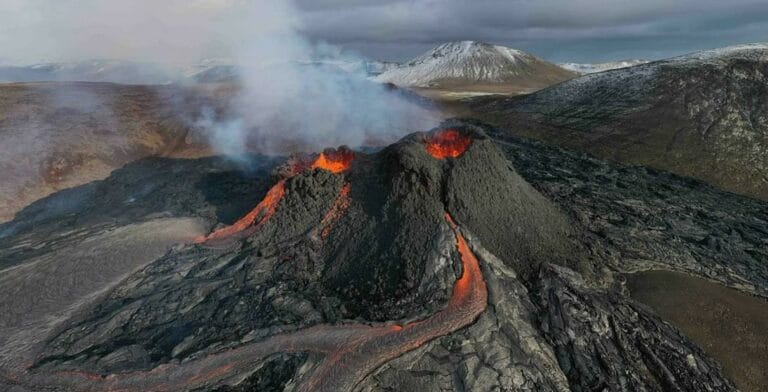
Volcano in Iceland: July 2023 Eruption at Litli-Hrútur | All you need to know
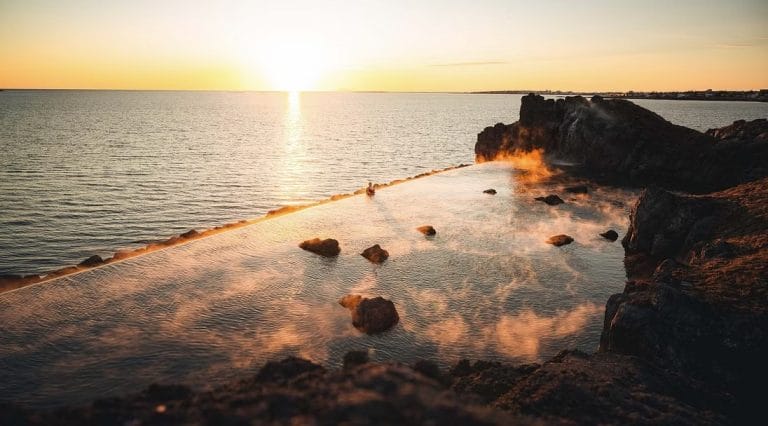
Sky Lagoon vs Blue Lagoon

Top 10 Iceland Locations
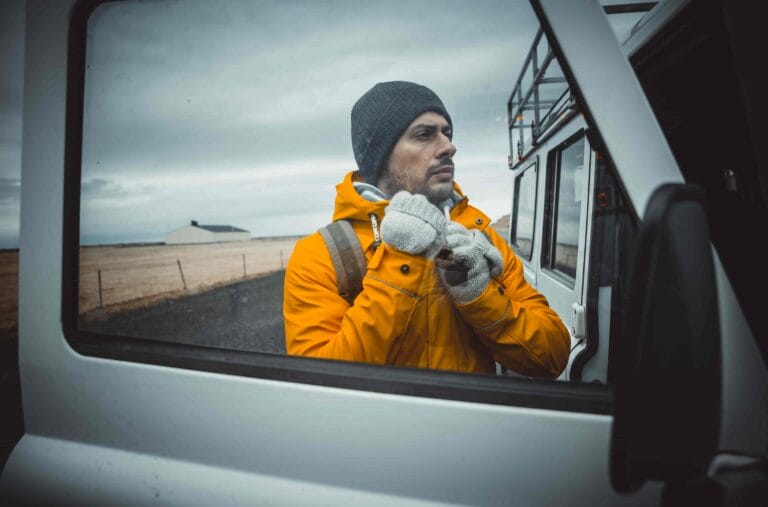
Black Friday Deals for your trip to Iceland 2021
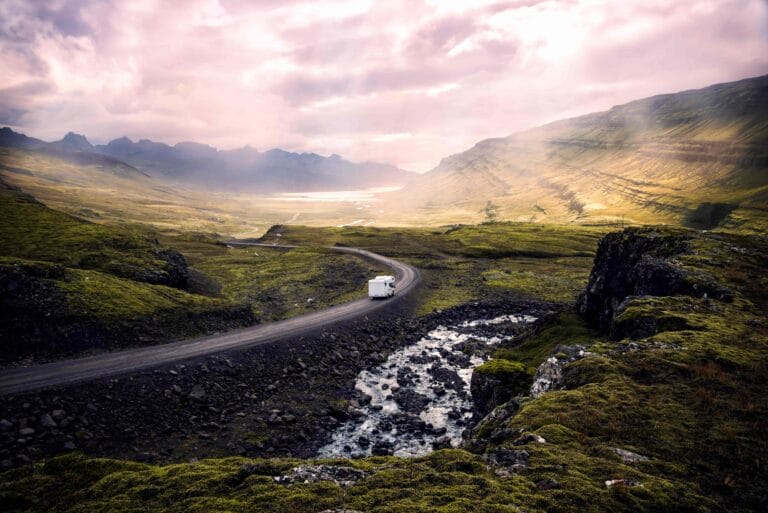
7 Reasons why you should Rent a Camper Van in Iceland
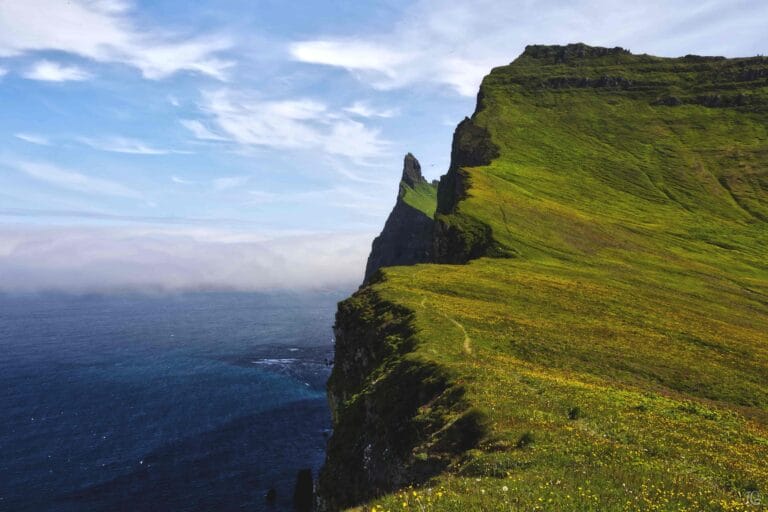
How to hike Hornstrandir on your own?

Hiking in Kerlingarfjöll – Hiking Routes & Guides
Popular things to do, sightseeing tours, glacier tours, hot spring tours, ice cave tours, glacier hiking tours, hiking tours, super jeep tours, whale watching tours, popular tours.
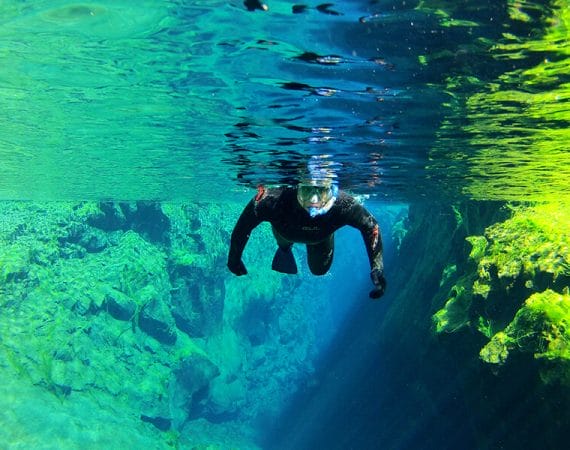
Golden Circle & Snorkeling Silfra
Travel style, starts from, from 34,900 isk.

Snaefellsnes Peninsula & National Park
From 18,900 isk.
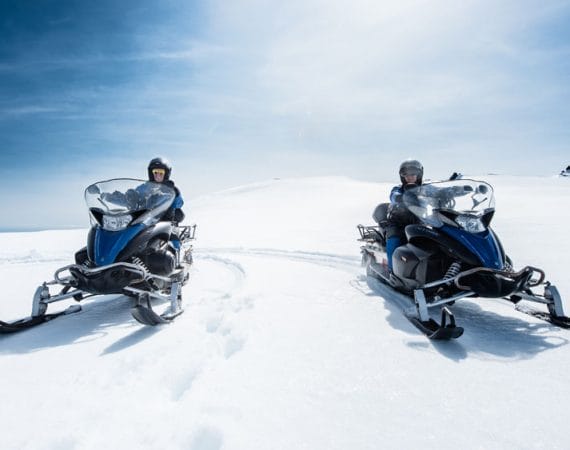
Snowmobile on Vatnajokull | The Largest Glacier in Europe
South iceland, from 26,000 isk.

Katla Ice Cave | The Ice Cave Under the Volcano | Super Jeep Tour from Vik
From 27,900 isk.
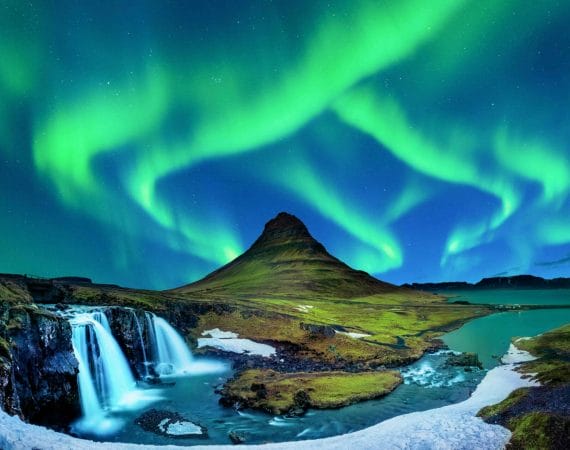
8 Day Iceland Tour – Winter
From 329,900 isk.
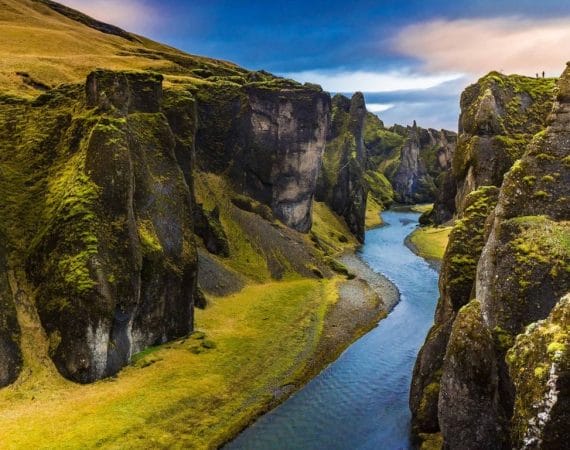
3 Day Golden Circle & South Coast Tour
From 114,990 isk.
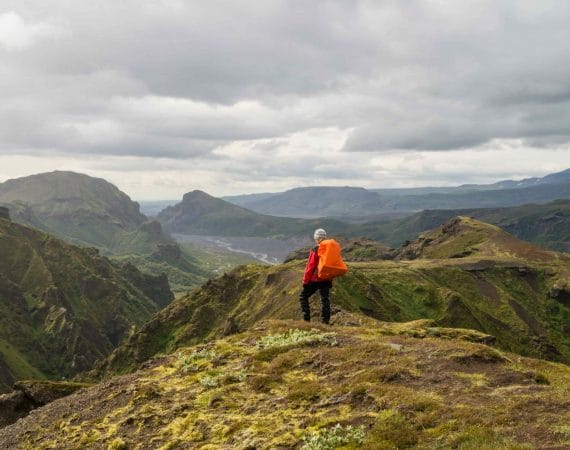
Fimmvorduhals Hiking Tour
Challenging
Reykjavik, Selfoss, Hella
From 29,900 ISK

South Coast, Waterfalls & Glacier Hike
From 22,990 isk.

Landmannalaugar Hiking, Hot Springs & Haifoss waterfall | Day Tour from Reykjavik
From 25,990 isk.
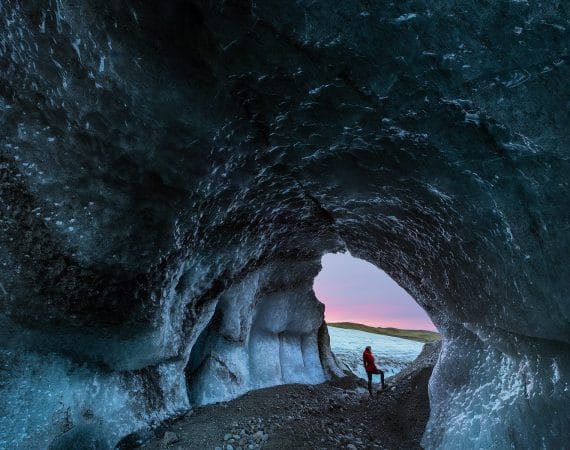
Ultimate Glacier Hike in Skaftafell – Ice Blue Winter Wonderland
From 19,900 isk, more interesting articles.
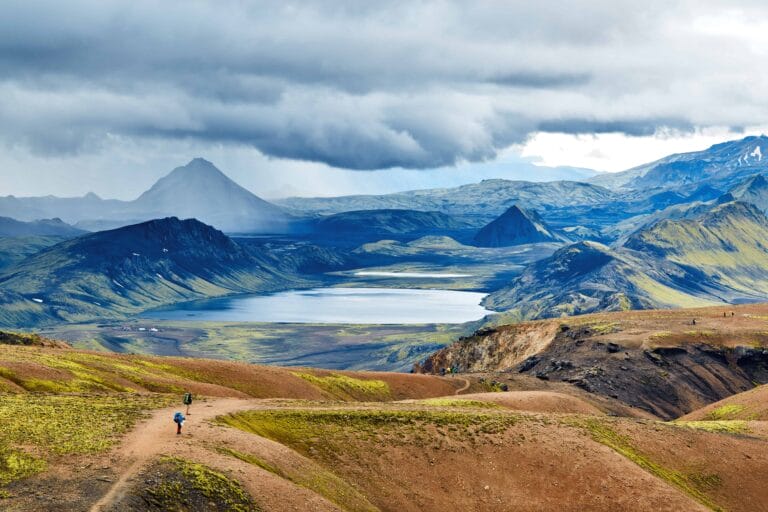
Hiking in Landmannalaugar | Hiking Routes
Most popular things to do in iceland.

Snowmobile Tours

Horse Riding Tours

Top Attractions in Iceland

Seljalandsfoss

Reynisfjara

Jökulsárlón

Blue Lagoon
Explore iceland by region.

Golden Circle

Snaefellsnes

West Iceland

East Iceland

North Iceland

Hidden Gems

Surfing in Iceland

Iceland is located in the North Atlantic Ocean and has come out as a destination for adventurous surfers. As the name of the country says, surfing in Iceland can be very cold. The island is very exposed to any swell direction and has lots of set-ups that can generate world-class waves but surfing epic waves requires a lot of traveling and studying the forecast. Not everyone is willing to wear a wetsuit and paddle out in negative temperatures but when you score the perfect conditions you will have a blast that you will never forget. The coast of Iceland is extremely exotic and driving to the surf breaks is already an experience by itself. The land of the fire and ice as the island is known have surf spots surrounded by glaciers and volcanoes making it a unique scenery. The surf community of the island is small but tight and even though being a surfer in this environment can be hard there is a new generation that is evolving and pushing the boundaries of the sport. There are a few surf schools that provide surfboard rental and guidance that can help you a lot during your stay. Besides surfing Iceland offers solitude, an interesting culture and friendly people. This will be nothing like any of your previous surf trips and be prepared because the adventure is around every corner of this majestic island.
Climate in Iceland
As the name implies the climate in Iceland is cold, windy and cloudy. The country receives cold winds from the north pole but is also tempered by the ocean and the gulf stream that flows in it. There is not much variation of temperature between the day and night or from one season to the other. The north coast of the country is colder than the rest of the island. The average temperature in summer is 12°C (53°F) and days are extremely long with almost no dark hours. Winter is not as cold as imagined with average temperature around 0°C (32°F). Although there are waves all year round the best time to surf is between October and March when storms hit the island from all directions. Winter has bigger waves but summer has the advantage of prolong daylight and warmer weather. The water temperatures are cold throughout the whole year so make sure you bring the right gear. Average sea temperature in winter is 4°C (39°F) and a 5/6 wetsuit is recommended plus booties, gloves and a hood. During summer the sea temperature is slightly higher averaging 8°C (46°F).
Best surf spots in Iceland
The main surfing area in the island is located around the Reykjanes Peninsula. This is located less than an hour from the capital Reykjavik but the stunning scenery makes you feel as if you traveled back in time. Most of the waves here break on top of a sharp volcanic reef with the exception of Sandvik which is a good spot for beginners. The mais surf spots are Thorli, Grotta, Gardur, The Rock, Grindavik, Rolling Stones, Ollie’s Shipwreck, Hafnarskeich and Kirkjusandur.
Budget Planning
Meal price range
Simple meals start at $13 USD. Mid-rang meals start at $20 USD. Dining & drinking at high-end restaurants can cost anywhere from $50-150 USD
Equipment rental
There are a few places where you can rent gear. Boards start at $55 USD a day
Prepaid SIM cards
Síminn is a good choice. SIM cards can be purchased from kiosks, malls, gas stations, and grocery stores. Prepaid packages start at $20 USD.
Public transport
Four bus companies provide regular long-distance services around Iceland, but they can be expensive.
Rental cars start at $50 USD a day.
Gas prices
$1.72 USD a liter.
Types of risks
Earthquakes and volcanic activity
How to prepare
Citizens from 62 countries, including the US, and Australia, can enter Iceland without a visa for up to 90 days.
Although it's not mandatory, it’s recommended that you have been vaccinated for hepatitis A & B, yellow fever, typhoid, rabies, meningitis, polio, Tdap, chickenpox, shingles, pneumonia, influenza, measles, mumps and rubella.
Things to know
Language & Currency
Icelandic is the official language. English is taught as a second language in Iceland, so you can get by with English very easily.
Icelandic króna (kr or ISK)
Best time to go
There are waves all year round but the best time to surf is between October and March when storms hit the island from all directions.
Checking Surf forecast
Checking the forecast about a week before your trip is always a good idea. Understanding what the waves will be like and knowing what gear to pack is essential. You can check the forecast for the waves here.
Do I need pack a pharmacy kit
You should bring a basic kit. Including ear drops, eye drops, bandaids, ear plugs, gaze, alcohol, and broad spectrum antibiotic ointment.
Travel/Surf Insurance
World Nomads has great travel insurance packages that are not super expensive and they cover surfing.
Check surf pictures of Iceland at #surfingiceland .
For availability and quote
For job applications
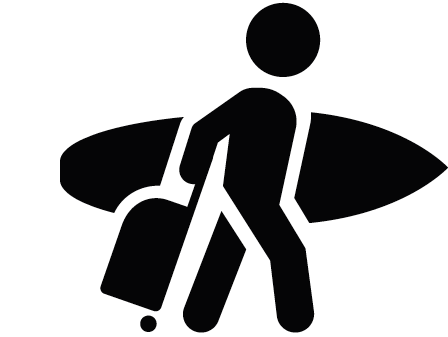
24 hours support on Skype (nomadsurfers-europe) and Calls +33 970445933

Snorkeling in Silfra
Snorkeling in the clearest water in the world We offer both drysuit and wetsuit - the choice is yours Breathtaking experience
SUP námskeið
Prófaðu eitthvað nýtt í sumar! Í samstarfi við SUP ICELAND bjóðum við uppá skemmtilegt SUP byrjenda námskeiði alla þriðjudaga í sumar.
Surf námskeið
Langar þig að prófa að surfa? Ísland býður uppá frábærar aðstæður Við bjóðum uppá skemmtileg byrjendanámskeið og allur surf-búnaði fylgir með

Day Tours in Iceland | Adventure & Activity

HAVE A BLAST
Adventure Vikings offer Adventure in Iceland. Day Tours with various types of outdoor activities and combination of activities. Among them are Snorkeling in drysuit or wetsuit, surfing, caving, stand up paddleboarding and The Golden Circle.

SMALL GROUPS
We at Adventure Vikings focus on personal service and therefore small groups. We want you to experience Iceland’s unique nature privately and not in an overcrowded party when you have your adventure in Iceland.

TRIPADVISOR

Join us on our Facebook page and lets keep in touch for your adventure in Iceland. On our Facebook page you can see photos and updates from tours, get insight from other travellers and keep in touch with us.

“ It is definitely worth trying to swim in between the two continent in Iceland Vivian from UK 14 February 2015
“ I would highly recommend Adventure Vikings to anyone travelling to Iceland looking for excursions Molly from US 13 March 2015
“ One of the most fun things I've ever done! Zoe R from US 10 August 2015
“ The guides were extremely nice and even fed us cookies and hot chocolate after snorkeling! Baker177 3 May 2016
adventurevikings
Activity & Adventure tour operator based in Reykjavik – specializing in outdoor activities

- Snorkeling in Iceland
- Caving Tours in Iceland
- SUP – Stand Up Paddle in Iceland
- Surfing in Iceland
- Hiking Tours
- Golden Circle
Adventure Vikings
- Terms and Conditions
- Sustainability
- Adventure Blog
© 2024 Adventure Vikings.
- tripadvisor
- Snorkeling in Wetsuit
- Snorkeling in Drysuit
- Snorkeling and Caving
- Snorkeling and Horseback Riding
- Snorkeling and Sky Lagoon Spa
- Snorkeling and Fly Over Iceland
- Caving in Leidarendi Cave
- Caving and Snorkeling
- Caving and Horseback Riding
- Golden Circle – Fridheimar & Sky Lagoon
- Golden Circle & Fridheimar Tomato Farm
- Golden Circle, Silfra Snorkeling & Fridheimar Tomato Farm
- Red Lava Horse Riding
- Surf School
- Surf around Reykjanes Peninsula
- SUP Into The Forgotten Fjord – Private Tour
- Reykjavik City SUP & Sunset – Private Tour
- Hiking in Reykjadalur – Private Tour
- Silfra Snorkeling – Private Tour
- Fly Over Iceland
- SUP Námskeið
- SUP Hvataferðir og Hópefli
- SUP Einkakennsla
- SURF Námskeið
- Surf & SUP Rental
- Snorkeling Rental
- Mountaineering Rental
Hunter Jones Caught a New Perspective on Surf Trips Exploring Iceland

“I liked the idea of going somewhere I’d never been before and surfing waves with nobody around — potentially even finding new waves that had never even been surfed before.”
We all share one universal objective when it comes to surf trips: score. We want to score. We plan to score. We expect to score. Finding and riding great waves are pretty much the top factors in determining where and when we’ll go to a place like Central America, Hawaii, somewhere in the Indian Ocean, you get the picture. So it’s not often we find ourselves booking plane tickets and planning accommodations with an expectation that the best wave of our life (probably) isn’t in the forecast.
Hunter Jones had to release all of that when Dane Anderson got him on board for a trip to Iceland. Not because there wouldn’t be waves, but as Jones puts it, the decision to explore the tiny Arctic island meant nothing would be guaranteed. No promise of glassy barrels or even reliable swell windows.
“And that’s what made it so exciting,” he says. “I grew up watching pro surfers do these arctic trips and I always wanted to do some kind of proper cold-water trip. I liked the idea of going somewhere I’d never been before and surfing waves with nobody around — potentially even finding new waves that had never even been surfed before.”
The idea had been floated around for a long time before Jones and Anderson actually pulled the trigger. Dane had been to Iceland before and knew enough about the surf scene there that they’d have spots to turn to. But for Jones it was all new territory he was excited to tackle. He admits the nature of planning and executing an Arctic surf trip is like no other trip. Aside from the obvious hurdle of getting excited enough to surf in near-freezing temps (pack two wetsuits), the layout of the island lends itself to a lot of changing variables when it comes to waves. That means being up for anything spontaneous, like scoping out a spot that looks like it could be protected from the weather or a point that might churn out a wave here and there – then rolling the dice and seeing if it pays off.
“There’s endless opportunity to find waves because you’re on an island,” he explains. “If you’re willing to drive and be on the pulse of the weather, the swell, and everything that comes with it, you can totally find waves to yourself. More often than not on this trip it was just us in the water. It was super rewarding.”
So the approach to Arctic surf trips is clearly different from your run-of-the-mill strike mission in Central America. For Jones that brought a uniquely rewarding experience that fits into the “step outside of your comfort zone” brand of travel. As he puts it, you even have to be open to the idea of not scoring at all.
“I always go on a surf trip with an understanding that it’s all going to be fine. You stay at the spot and that’s where you’re going to be surfing. But this was completely up to us.”
Only the best. We promise.
Join our community of contributors.


IMAGES
VIDEO
COMMENTS
The very best time to surf in Iceland is between October and March when heavy storms hit the island from all directions. During this time the ocean drops to freezing temperatures and 5-6mm suits become absolutely essential. Should you long for an arctic surfing adventure in Iceland you would be well advised to study the Icelandic weather ...
Surf around Reykjanes Peninsula. Not exactly sunny beaches and dreamy blue sea but surfing in Iceland gives you a blast that you won't forget. The coasts of Iceland makes surfing exotic and you can ride world class waves surrounded by glaciers and volcano lava. As a bonus, no place in the world offers more variety of wildlife encounters.
Sandvik. Sandvik is one of the best-known and most consistent surf spots in Iceland. The westerly orientation means that the beach - which is a jaw-dropping run of over 1,000 meters of black-diamond sand - gets almost continuous swell. That will oscillate between unruly storm swell in the winter months to long-period groundswells from a SW ...
Basecamp . Arctic Surfers Norðlingabraut 4, 110, Reykjavik Iceland +354 551-2555 / +354-6912345. [email protected]. Designed in Iceland by Joe Comiskey
Overview Waves Seasons Attractions. CALL +61 02 9939 0890. ENQUIRE. With 5000 km of coastline to explore across Europe, Iceland presents a rare opportunity to surf virgin territory. Most Icelandic surfing is done around the Reykjanes Peninsula, close to Reykjavik in the Southwest. Most of the waves break over volcanic reef or basalt rocks.
With access to our vast network of friends and family all over Iceland we put together the adventure vacation of your dreams in rugged luxury. At Arctic Surfers we pour our heart and soul into building itineraries that transcend the traditional vacation experience. Each trip is custom made to fit each guest.
The Reykjanes peninsula is the best surfing region in Iceland. It is located just 30 miles (50 kilometers) west of Reykjavik and produces world-class waves. For obvious reasons, these lava breaks are often uncrowded, if not mostly empty, even on epic surfing days. Reykjanes is covered with lava expelled from some of the country's two dozen ...
Book Now. South & West Tour - The Two-Day Adventure. Join us on an incredible surf trip through the South and West of Iceland! Our two-day surf trip takes us from the Reykjanes peninsula along the rough but beautiful coastline of Iceland's South-west though one of Iceland's four national parks up to the stunning Snæfellsnes peninsula.
Understanding Iceland's Arctic Waters. My surf trip planning always accounts for the cold water temperatures of Iceland's beaches, which demand the use of quality wetsuits capable of withstanding the chill. The water temperatures hover around 2-6°C (36-43°F), so I make sure to gear up with 5-7mm wetsuits, hoods, gloves, and boots.
Grotta. Also directly in front of a lighthouse, Grotta is located on the Seltjarnarnes Peninsula, less than 10 minutes from Reykjavik. The break works best when there are offshore winds, and its swell angle is coming from the west. Clean waves are less common than blow outs, but when the conditions are optimal it's a must if you're in the area.
Winter is the harshest season in Iceland, but the best in terms of surfing. The weather is cold and unpredictable, the days are short and dark, and road conditions can be treacherous. That aside, winter offers the best swells of the year, amazing light, and the potential of seeing the Northen Lights. If you can brace the cold, both in the air ...
September to November can be good months, with manageable air and water temperatures, and frequent low pressures. May-August sees plenty of summer flat spells in the southwest and could be a good time to explore the east and the north coasts for arctic wind swells. Tides exceed 5m (15ft) and there are only a few spots that can handle all tide ...
Surf spots in Iceland: Surfing in Iceland is one of the most unpredictable, cold and beautiful experiences you will ever have. Find the best spots for surfing and kitesurfing. ... With our 9 days round trip through Iceland hot springs, beautiful glacier and volcanic landscapes and raging waterfalls await you.
An Iceland surf guide will be happy to help you with your choice of equipment, though, so don't worry. Even though Iceland is at the end of the warm Gulf Stream, the waters will never be warm. The warmest surfing in Iceland will be around 10 °C at the peak of summer and drop to around 4 °C in the winter. Fun fact: 4 °C is a normal ...
Most of the guided surfing tours are organized for intermediate surfers by arctic surfers as fewer people like to take the risk in the cold waters of Iceland that is inevitable with beginners. The tour guides do not provide basic courses for beginners, hence some hands-on experience is a prerequisite for surfing in Iceland.
Besides surfing Iceland offers solitude, an interesting culture and friendly people. This will be nothing like any of your previous surf trips and be prepared because the adventure is around every corner of this majestic island. Climate in Iceland As the name implies the climate in Iceland is cold, windy and cloudy.
*UPDATED: Sound Mix Fix* - Filmmakers Mike Bromley and Ryan Meichtry follow the Icelandic duo, photographer Elli Thor Magnusson and pro surfer Heidar Logi, i...
With three hours of light each day, brutal winter storms and freezing temperatures, Iceland is far from the ideal surf trip. This didn't stop Chris Burkard a...
With 5000 km of coastline to explore across Europe, Iceland presents a rare opportunity to surf virgin territory. Most Icelandic surfing is done around the Reykjanes Peninsula. 0508 737 332. Enquire. Destinations. Indonesia ... Iceland Surf Travel Guide. Overview Waves Seasons Attractions. CALL 0508 737 332.
Activity & Adventure tour operator based in Reykjavik - specializing in outdoor activities. Adventure Vikings lets you enjoy various adventure tours such as Golden Circle tour, surfing tours, Silfra diving tours, Silfra Snorkeling tours, caving tours, hiking tours and SUP tours. Dive between two tectonic plates in Iceland.
So the approach to Arctic surf trips is clearly different from your run-of-the-mill strike mission in Central America. For Jones that brought a uniquely rewarding experience that fits into the ...